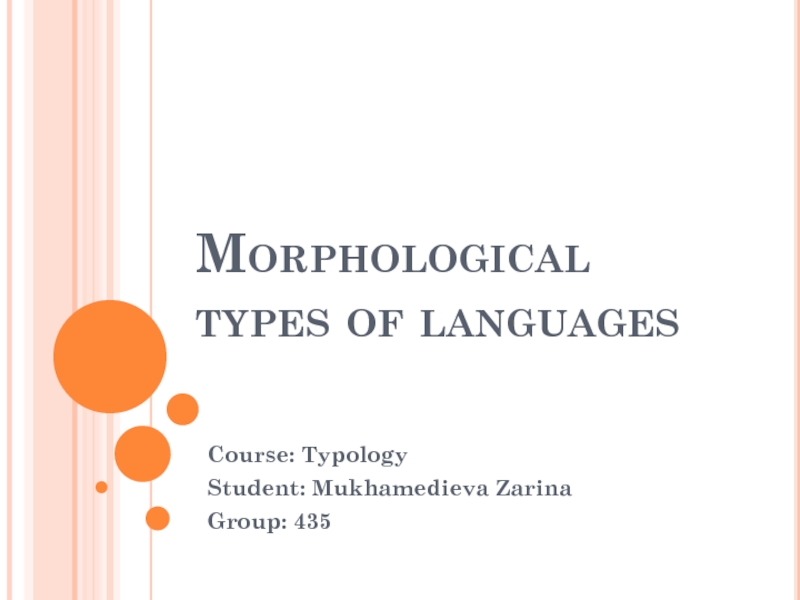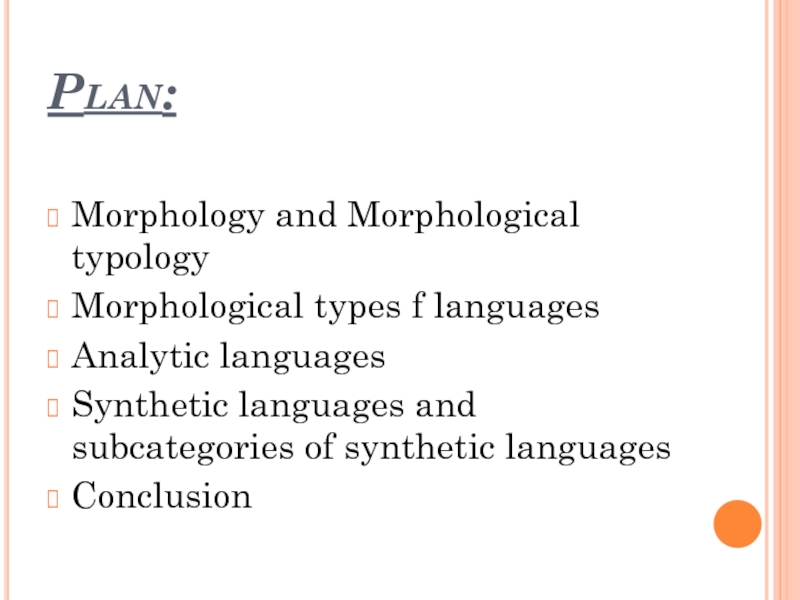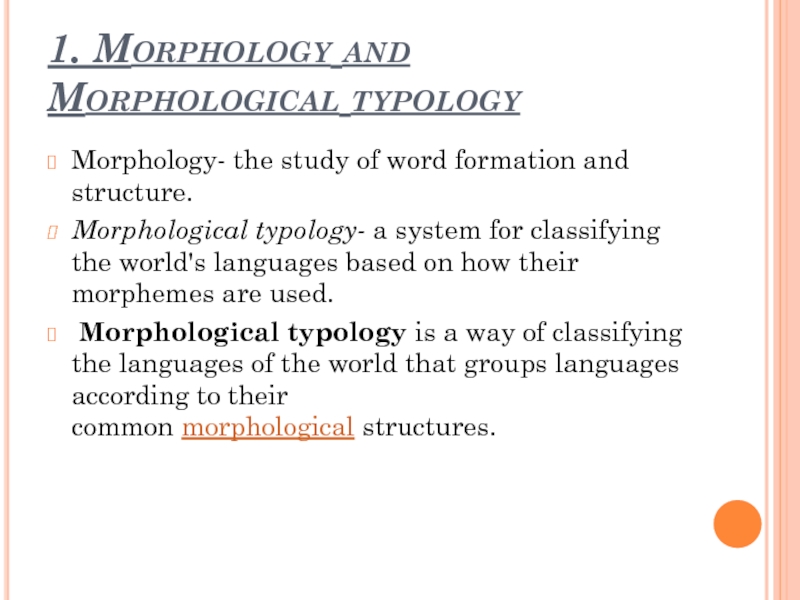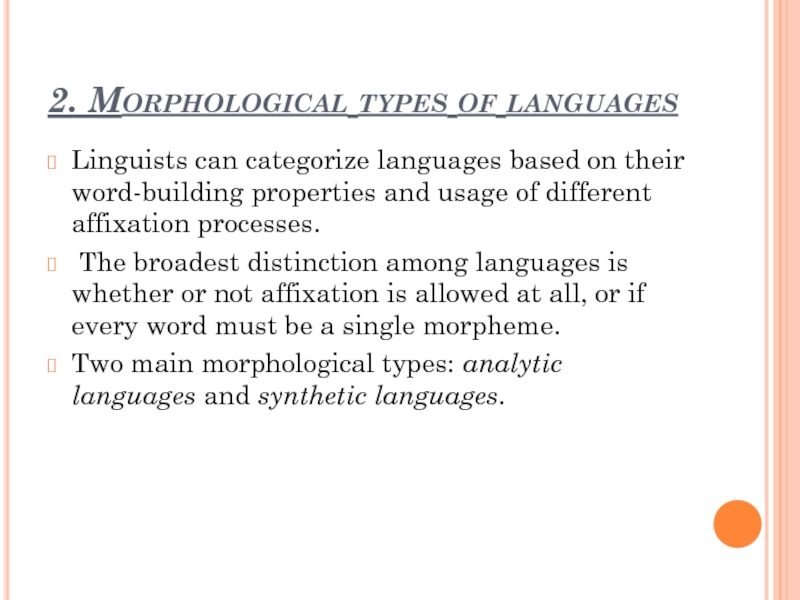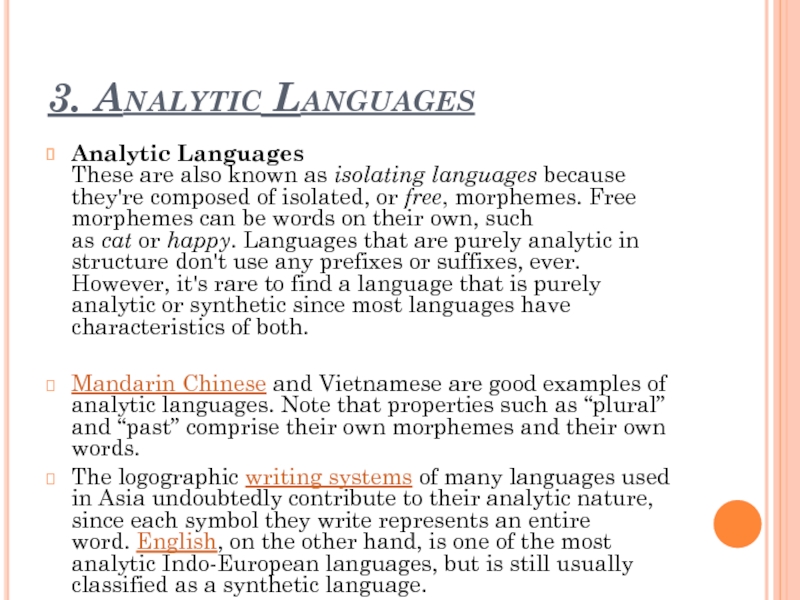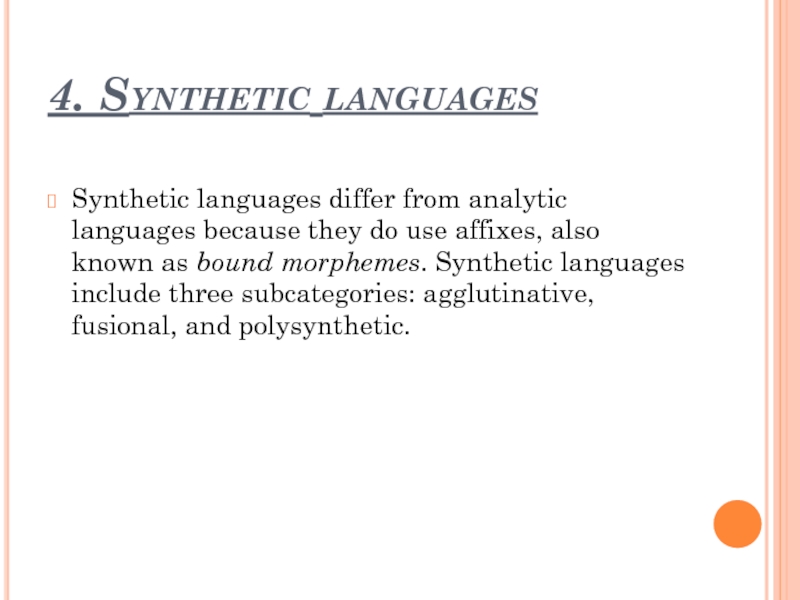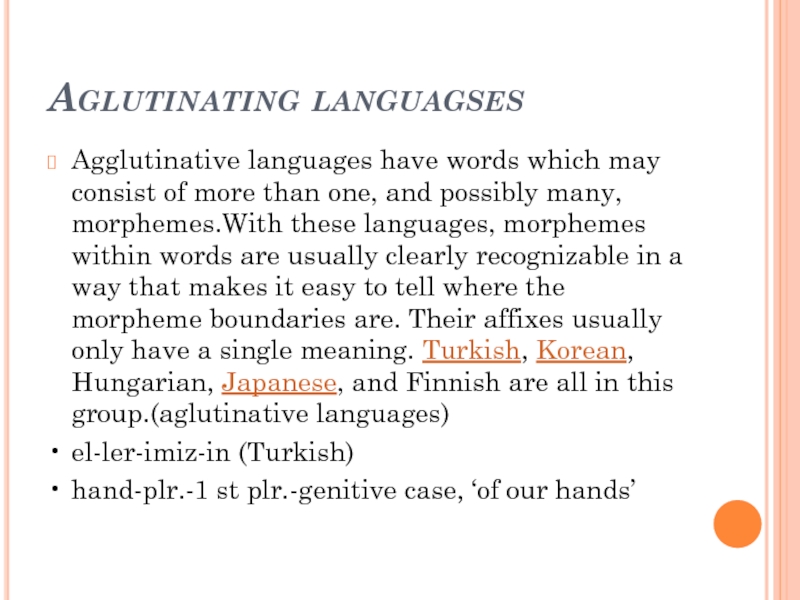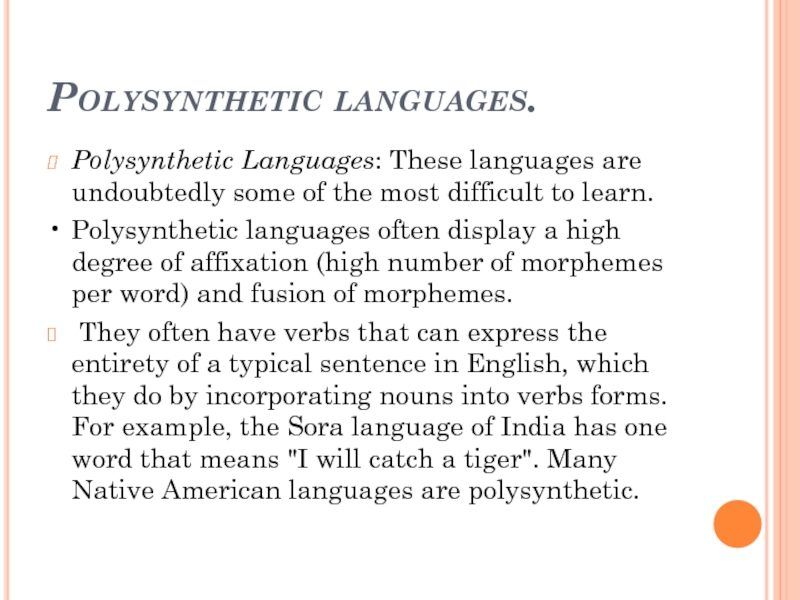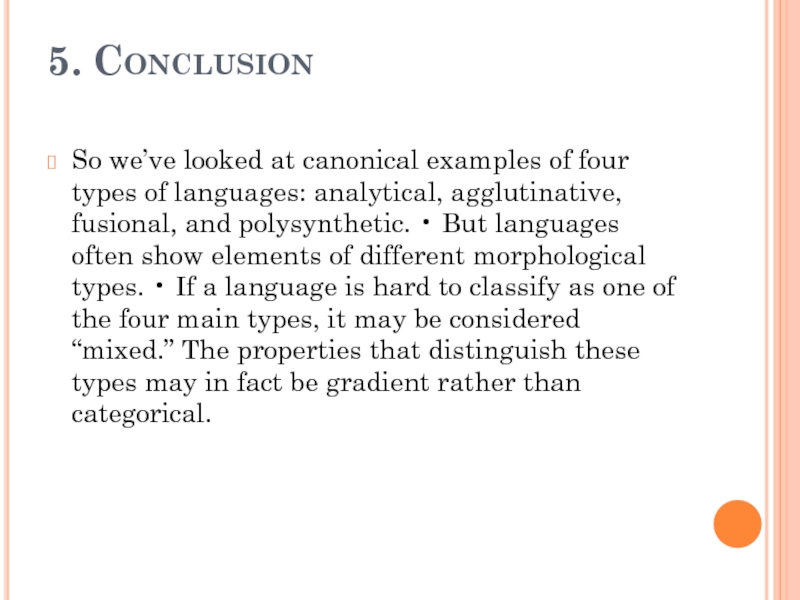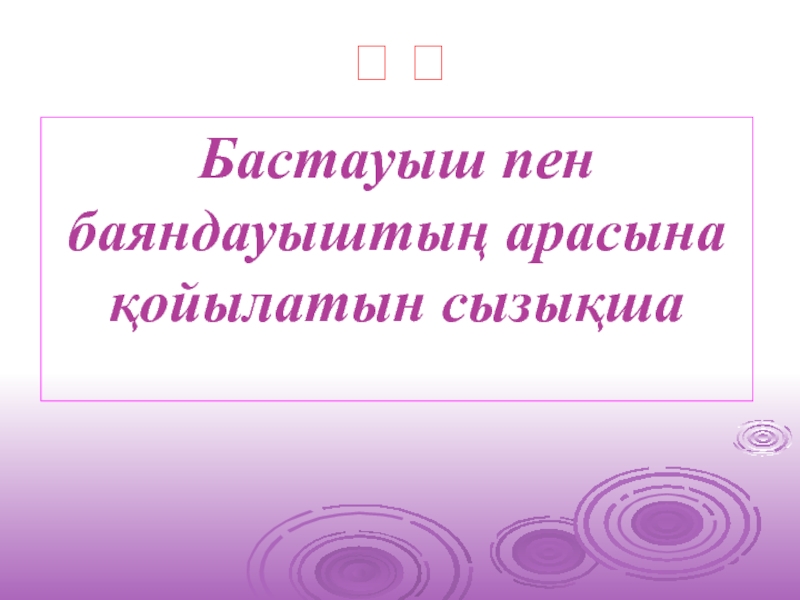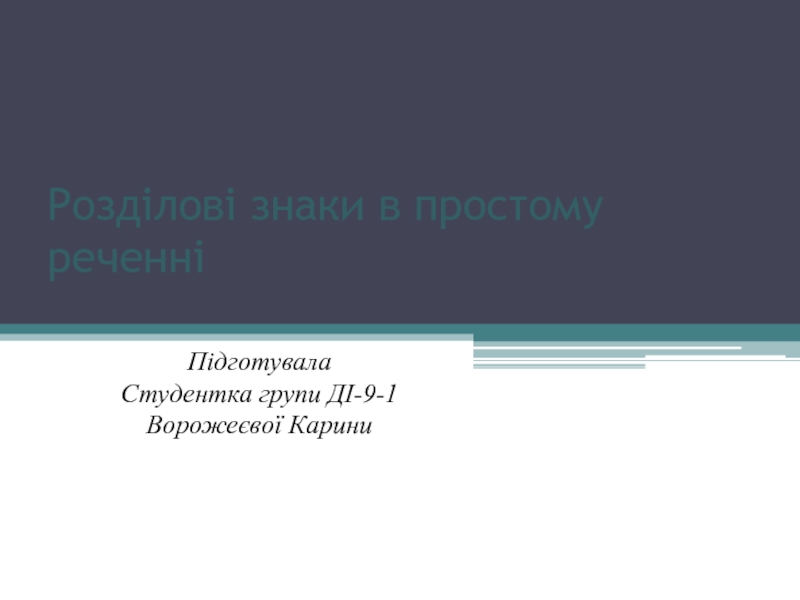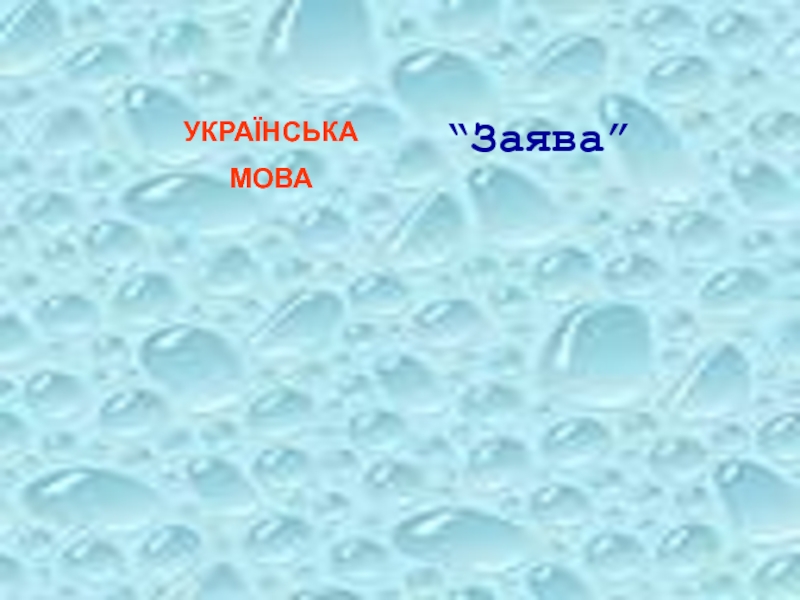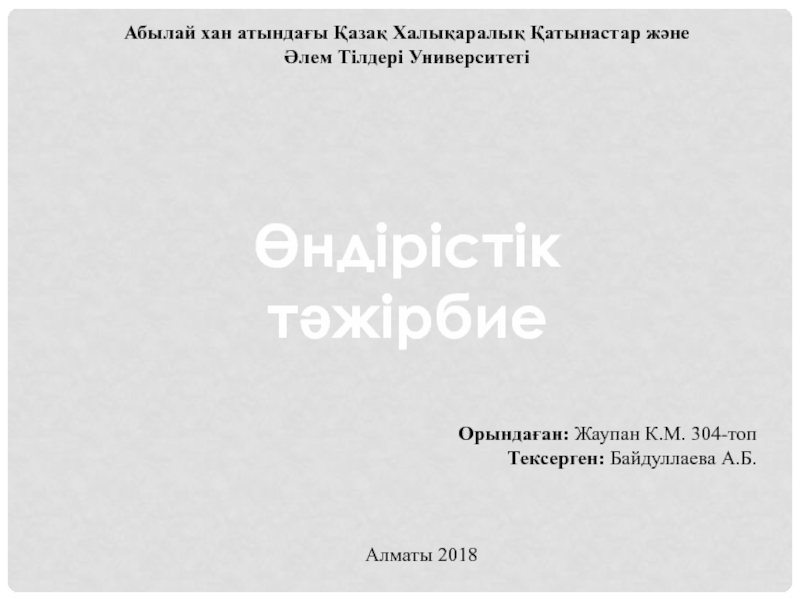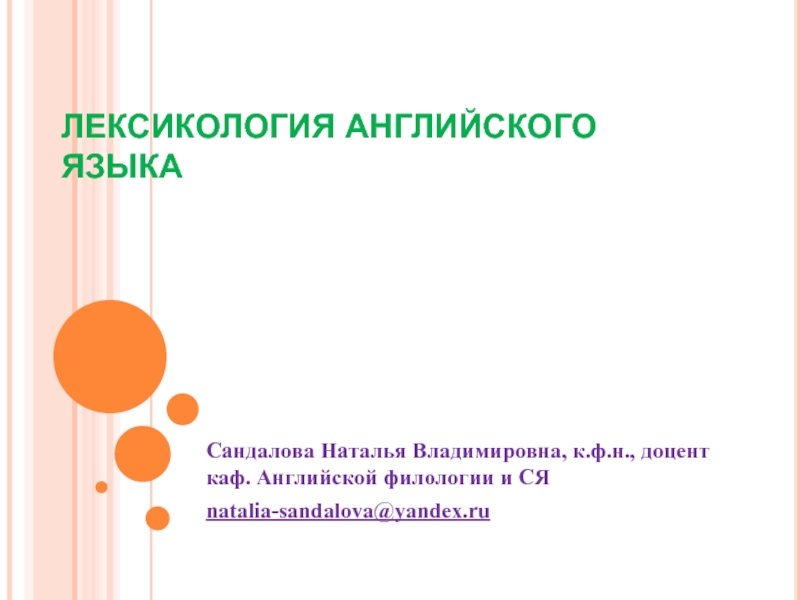- Главная
- Разное
- Дизайн
- Бизнес и предпринимательство
- Аналитика
- Образование
- Развлечения
- Красота и здоровье
- Финансы
- Государство
- Путешествия
- Спорт
- Недвижимость
- Армия
- Графика
- Культурология
- Еда и кулинария
- Лингвистика
- Английский язык
- Астрономия
- Алгебра
- Биология
- География
- Детские презентации
- Информатика
- История
- Литература
- Маркетинг
- Математика
- Медицина
- Менеджмент
- Музыка
- МХК
- Немецкий язык
- ОБЖ
- Обществознание
- Окружающий мир
- Педагогика
- Русский язык
- Технология
- Физика
- Философия
- Химия
- Шаблоны, картинки для презентаций
- Экология
- Экономика
- Юриспруденция
Morphological types of languages презентация
Содержание
- 1. Morphological types of languages
- 2. Plan: Morphology and Morphological typology Morphological
- 3. 1. Morphology and Morphological typology Morphology- the
- 4. 2. Morphological types of languages Linguists can
- 5. 3. Analytic Languages Analytic Languages These are
- 6. 4. Synthetic languages Synthetic languages differ
- 7. Aglutinating languagses Agglutinative languages have words which
- 8. Fusional languages Fusional languages, like other synthetic
- 9. Polysynthetic languages. Polysynthetic Languages: These languages are
- 10. 5. Conclusion So we’ve looked at
- 11. Thank you for your attention!!!
Слайд 2Plan:
Morphology and Morphological typology
Morphological types f languages
Analytic languages
Synthetic languages and subcategories
of synthetic languages
Conclusion
Conclusion
Слайд 31. Morphology and Morphological typology
Morphology- the study of word formation and
structure.
Morphological typology- a system for classifying the world's languages based on how their morphemes are used.
Morphological typology is a way of classifying the languages of the world that groups languages according to their common morphological structures.
Morphological typology- a system for classifying the world's languages based on how their morphemes are used.
Morphological typology is a way of classifying the languages of the world that groups languages according to their common morphological structures.
Слайд 42. Morphological types of languages
Linguists can categorize languages based on their
word-building properties and usage of different affixation processes.
The broadest distinction among languages is whether or not affixation is allowed at all, or if every word must be a single morpheme.
Two main morphological types: analytic languages and synthetic languages.
The broadest distinction among languages is whether or not affixation is allowed at all, or if every word must be a single morpheme.
Two main morphological types: analytic languages and synthetic languages.
Слайд 53. Analytic Languages
Analytic Languages
These are also known as isolating languages because they're composed
of isolated, or free, morphemes. Free morphemes can be words on their own, such as cat or happy. Languages that are purely analytic in structure don't use any prefixes or suffixes, ever. However, it's rare to find a language that is purely analytic or synthetic since most languages have characteristics of both.
Mandarin Chinese and Vietnamese are good examples of analytic languages. Note that properties such as “plural” and “past” comprise their own morphemes and their own words.
The logographic writing systems of many languages used in Asia undoubtedly contribute to their analytic nature, since each symbol they write represents an entire word. English, on the other hand, is one of the most analytic Indo-European languages, but is still usually classified as a synthetic language.
Mandarin Chinese and Vietnamese are good examples of analytic languages. Note that properties such as “plural” and “past” comprise their own morphemes and their own words.
The logographic writing systems of many languages used in Asia undoubtedly contribute to their analytic nature, since each symbol they write represents an entire word. English, on the other hand, is one of the most analytic Indo-European languages, but is still usually classified as a synthetic language.
Слайд 64. Synthetic languages
Synthetic languages differ from analytic languages because they do
use affixes, also known as bound morphemes. Synthetic languages include three subcategories: agglutinative, fusional, and polysynthetic.
Слайд 7Aglutinating languagses
Agglutinative languages have words which may consist of more than
one, and possibly many, morphemes.With these languages, morphemes within words are usually clearly recognizable in a way that makes it easy to tell where the morpheme boundaries are. Their affixes usually only have a single meaning. Turkish, Korean, Hungarian, Japanese, and Finnish are all in this group.(aglutinative languages)
• el-ler-imiz-in (Turkish)
• hand-plr.-1 st plr.-genitive case, ‘of our hands’
• el-ler-imiz-in (Turkish)
• hand-plr.-1 st plr.-genitive case, ‘of our hands’
Слайд 8Fusional languages
Fusional languages, like other synthetic languages, may have more than
one morpheme per word. The are similar to agglutinating languages, except that the morpheme boundaries are much more difficult to discern. Affixes are often fused with the stems, and can have multiple meanings. Fusional languages may have morphemes that combine multiple pieces of grammatical information
A prime example of a fusional language is Spanish, especially when it comes to verbs. In the word hablo "I speak", the -o morpheme tells us that we're dealing with a subject that is singular, first person, and in the present tense. It's difficult to find a morpheme that means "speak", however, since habl- is not a morpheme. Fusional languages can be tricky!
• [ˈabl-o] ‘I am speaking’ -[o] suffix means 1 st person sng., present tense
A prime example of a fusional language is Spanish, especially when it comes to verbs. In the word hablo "I speak", the -o morpheme tells us that we're dealing with a subject that is singular, first person, and in the present tense. It's difficult to find a morpheme that means "speak", however, since habl- is not a morpheme. Fusional languages can be tricky!
• [ˈabl-o] ‘I am speaking’ -[o] suffix means 1 st person sng., present tense
Слайд 9Polysynthetic languages.
Polysynthetic Languages: These languages are undoubtedly some of the most
difficult to learn.
• Polysynthetic languages often display a high degree of affixation (high number of morphemes per word) and fusion of morphemes.
They often have verbs that can express the entirety of a typical sentence in English, which they do by incorporating nouns into verbs forms. For example, the Sora language of India has one word that means "I will catch a tiger". Many Native American languages are polysynthetic.
• Polysynthetic languages often display a high degree of affixation (high number of morphemes per word) and fusion of morphemes.
They often have verbs that can express the entirety of a typical sentence in English, which they do by incorporating nouns into verbs forms. For example, the Sora language of India has one word that means "I will catch a tiger". Many Native American languages are polysynthetic.
Слайд 105. Conclusion
So we’ve looked at canonical examples of four types of
languages: analytical, agglutinative, fusional, and polysynthetic. • But languages often show elements of different morphological types. • If a language is hard to classify as one of the four main types, it may be considered “mixed.” The properties that distinguish these types may in fact be gradient rather than categorical.
